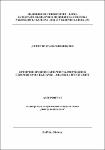I hereby declare that I will use the electronic library contents in compliance with COPYRIGHT AND RELATED RIGHTS ACT, Article 24, paragraph 1, item 9, only for scientific, cultural and educational purposes, without commercial gain, without commercial interest and non-profit.No Yes
Critical Congenital Heart Disease in Northeastern Bulgaria – Analysis of Results /// Критични вродени сърдечни малформации в североизточна България – анализ на резултатите
Date
2014Author
Шивачев, Петър
Shivachev, Petar
petar.shivachev@mu-varna.bg
Metadata
Show full item recordAbstract
Ретроспективно са изследвани 272 деца с критични вродени сърдечни малформации (КВСМ) от североизточна България за 25 тодишен период. За критични са приети вродени структурни кардиопатии, изявяващи се неонатално с неовладима сърдечна недостатъчност, кардиогенен шок и/или тежка хипоксемия. Те изискват спешна интервенция или загиват до края на 3-я месец. Всички пациенти са разделени по хемодинамичен принцип в 3 групи: обструктивни лезии на системната циркулация (ОЛСЦ), обструктивни лезии на белодробната циркулация (ОЛБЦ) и необструктивни смесващи кардиопатии (НСКП). Честотата на КВСМ е 12,5% от всички вродени кардиопатии. Най-чести са: транспозицията на големите артерии, коарктацията на аортата и синдромът на хипопластично ляво сърце. Най-честата първа клинична изява е цианозата, което подкрепя необходимостта от въвеждането на рутинен неонатален пулс оксиметричен скрининг. Над ¼ от новородените с изявени симптоми до 4-я ден остават недиагностицирани. Диагнозата се поставя основно в детските стационари. Без установено сърдечно заболяване са дехоспитализирани 15,8% от новородените, а в 22% началната диагноза е била неточна. Естествената еволюция е неблагоприятна, като до края на 1-я месец загиват 75% от пациентите. Интервентната активност е 51,5%, значително увеличена през последните години. Оперативните резултати са най-неблагоприятни при ОЛБЦ и след палиативни корекции. Следоперативната смъртност е 40,7%, а общата – 66,9%. Рисковите фактори, влияещи върху прогнозата са: видът и хемодинамиката на КВСМ, еднокамерната сърдечна анатомия, екстракардиалните аномалии и синдроми, недоносеността, перинаталната депресия, децата от селски райони, времето на клинична изява, водещата цианоза и липсата на сърдечен шум. Изработени са диагностичен и терапевтичен алгоритми. The contingent of this research were 272 children with critical congenital heart diseases (CCHD) from the region of North-East Bulgaria studied retrospectively for the period of 25 years. Congenital structural cardiopaties manifested in neonatal period with congestive heart failure, cardiogenic shock and/or severe hypoxemia were considered as critical. The above required urgent intervention, otherwise the children would have been dead till the end of the 3rd month. All the patients were divided into 3 different groups according to a hemodynamic criteria: obstructive lesions of the systemic circulation (OLSC), obstructive lesions of the pulmonary circulation (OLPC) and nonobstructive mixing cardiopathies (NMCP). The frequency of CCHD diagnosis was 12.5% of all congenital heart diseases. The most common were: transposition of the great arteries, coarctation of the aorta and hypoplastic left heart syndrome (HLHS). Cyanosis was usually the first clinical manifestation, which supported the need of introduction of routine, neonatal pulse oximetry screening. More that ¼ of newborns with clinically manifested symptoms until day 4 remained undiagnosed. Diagnosis was set mainly in children’s hospitals. 15.8% of newborns were discharged without established heart disease, and in 22% the initial diagnosis was incorrect. Natural progression estimates 75% unfavorable outcome for patients within the 1st month. Interventional operative procedures were performed in 51.5% of the cases, with significant increase in recent years. The most unfavorable surgical results were reported in the cases of OLPC and after palliative corrections. Postoperative mortality rate was 40.7% and the overall mortality – 66.9 percent. Risk factors affecting prognosis were as follows: type and hemodynamic of CCHD, univentricular heart anatomy, extracardiac anomalies and syndromes, prematurity, prenatal depression, children from the countryside, time of clinical manifestation, leading cyanosis and lack of a heart murmur. Diagnostic and therapeutic algorithms were put forward.

